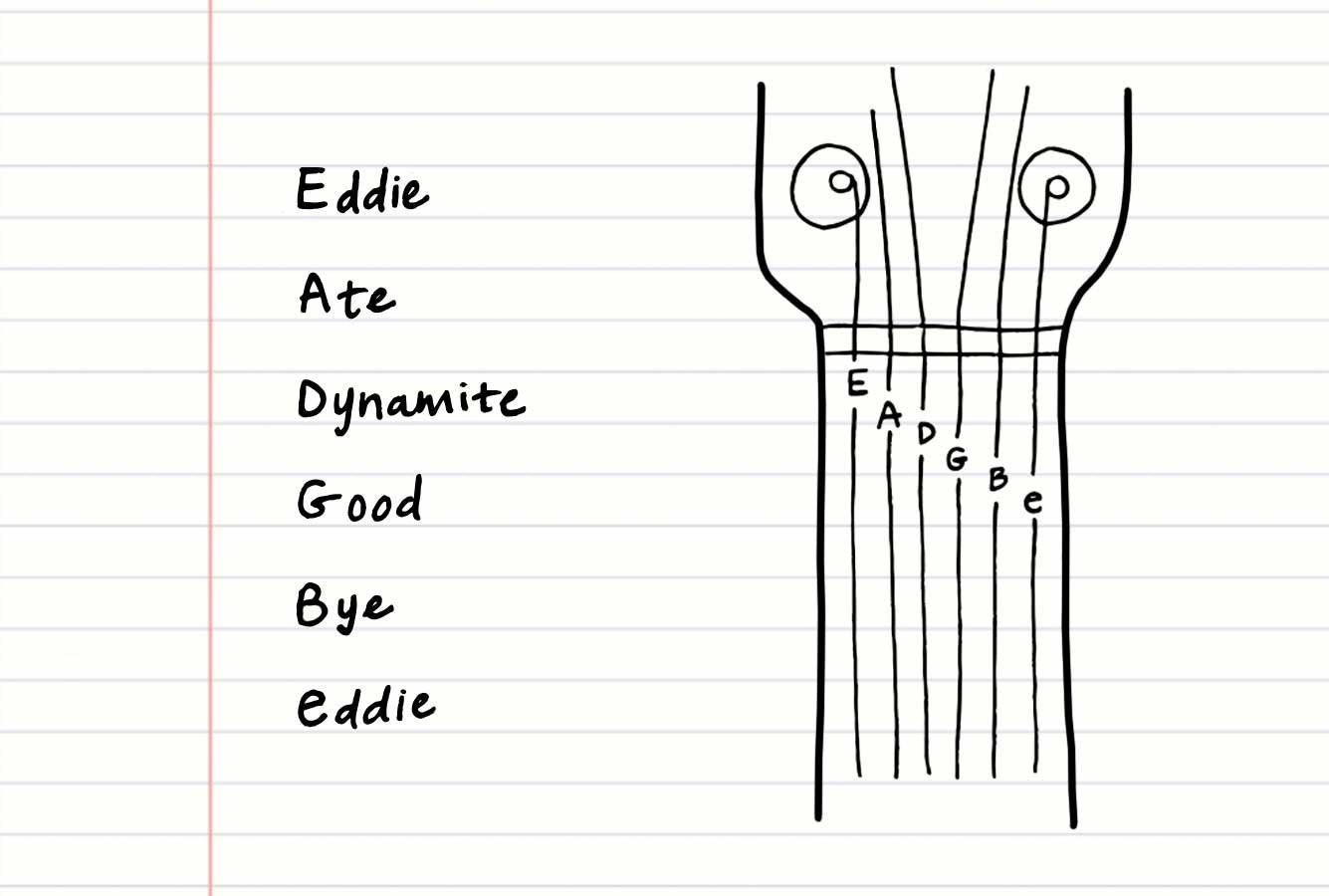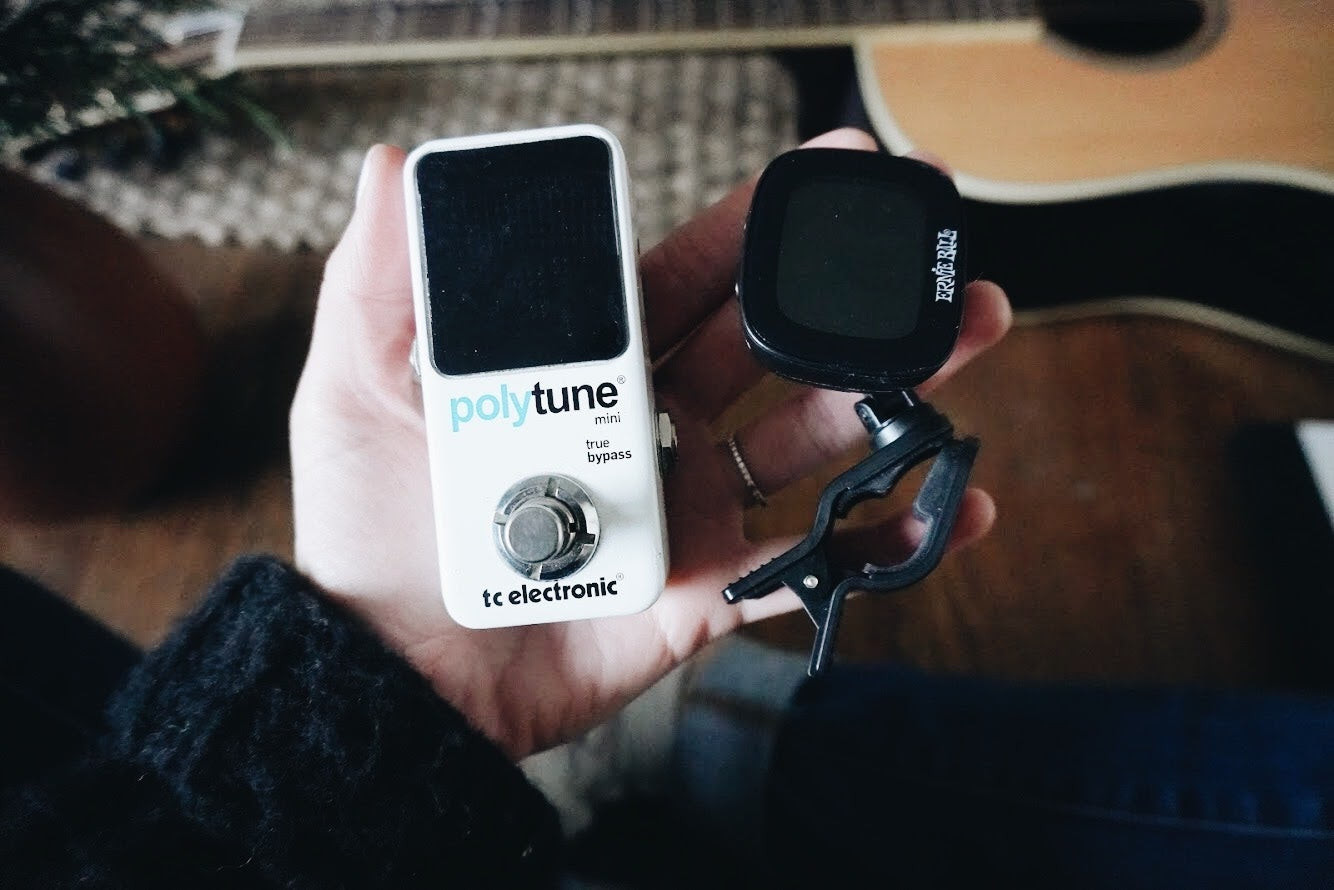Tuning a guitar might seem like a simple preliminary step before playing, but it’s the bedrock upon which your entire musical experience is built. The disheartening sound of an out-of-tune guitar is universally recognized as unpleasant, yet the world of guitar tuning extends far beyond simply being “in tune” or not. For aspiring and seasoned guitarists alike, understanding the nuances of tuning, and especially the role of the Tuning Key For Guitar, opens up a realm of creative possibilities and enhances your overall playing.
Standard tuning, often referred to as E-Standard, is the foundational tuning system that most guitarists learn and utilize. However, venturing beyond this standard opens doors to diverse sounds and playing styles. Alternate tunings offer unique sonic landscapes and can spark fresh creativity. In this guide, we will explore the essential aspects of guitar tuning, delving into standard tuning, various alternate tunings, and the crucial role your tuning key for guitar plays in achieving and maintaining perfect pitch.
Standard Guitar Tuning: The E-Standard Foundation
Standard tuning, designated as EADGBE from the thickest (lowest pitch) to thinnest (highest pitch) string, is the most prevalent tuning for guitar. It’s the assumed tuning for the vast majority of chord diagrams, tablatures, and guitar lessons, making it the cornerstone of guitar education and performance. This tuning is deeply ingrained in popular music across genres, and chances are, the majority of your favorite guitar-driven songs are rooted in E-Standard.
To easily remember the order of strings in standard tuning, many guitarists use mnemonic devices. A classic example is “Elephants And Donkeys Grow Big Ears,” or the more quirky “Eddie Ate Dynamite, Good Bye Eddie.” These memory aids help beginners quickly internalize the string order from low E to high E.
 Diagram of EADGBE standard tuning
Diagram of EADGBE standard tuning
If you’re just starting your guitar journey and need guidance on how to tune your instrument to standard, numerous resources are available. Visual aids, like video tutorials, can be particularly helpful in learning the process of adjusting your tuning key for guitar to achieve the correct pitches.
While the open strings in standard tuning don’t form a conventional chord in a specific key like “C,” they are arranged to facilitate chord creation and playing across various keys. This configuration, developed centuries ago, is based on intervals that optimize hand positioning and playability on the guitar. Its enduring popularity speaks to its effectiveness and versatility, making it the standard tuning we rely on today.
Mastering standard tuning is fundamental, but the guitar’s versatility truly shines when exploring alternate tunings. These deviations from E-Standard unlock new sonic territories and broaden your musical horizons.
Exploring Alternate Guitar Tunings: Expanding Your Sonic Palette
Alternate tunings, simply defined, are any tunings that deviate from the standard EADGBE. They provide a gateway to different sounds and often necessitate adjustments in finger placement compared to standard tuning. While they may require an initial adjustment period, the sonic rewards are well worth the effort.
 Letter D representing alternate tuning concept
Letter D representing alternate tuning concept
Open Tunings: Chordal Harmony at Your Fingertips
Open tunings are a fascinating category of alternate tunings where strumming the open strings creates a chord. This characteristic opens up unique possibilities for slide guitar, fingerstyle playing, and creating rich, resonant sounds.
Open C Tuning (CGCGCE)
Open C tuning is renowned for its breathtaking, almost ethereal sound. In this tuning, the strings are tuned to C G C G C E, and strumming the open strings produces a C major chord. While variations of Open C exist, this particular configuration is widely favored, especially for acoustic guitar and fingerstyle techniques. Open C lends itself to lush, spacious textures and has been embraced by artists across genres, including Coldplay, Bon Iver, Mumford and Sons, and Ben Howard, contributing to their signature sounds.
Open G Tuning (DGDGBD)
Open G tuning exudes a classic rock and blues vibe. Famously used by The Rolling Stones, as highlighted in many online guitar lessons, Open G (DGDGBD) allows you to play a G major chord simply by strumming the open strings. Its bluesy character is unmistakable and can be heard in the music of artists like The Black Crowes, Robert Johnson, and Joni Mitchell. Open G is particularly well-suited for slide guitar and blues-based riffs, offering a raw and rootsy sonic palette.
D Tunings: Versatility and Depth in the Key of D
The key of D boasts a remarkable variety of alternate tunings, each offering a distinct flavor and character. These D tunings provide diverse sonic landscapes within a single key, expanding your musical vocabulary.
Drop D Tuning (DADGBE)
Drop D is one of the simplest yet most impactful alternate tunings. It involves lowering only the lowest E string down a whole step to D, resulting in DADGBE. This subtle change creates a heavier, more resonant low end, making it popular in rock, blues, grunge, and even country music. The dropped D adds depth and power, particularly to power chords and riffs played on the lower strings. Artists who have utilized Drop D include Nirvana, Metallica, Foo Fighters, Led Zeppelin, and country artists like Miranda Lambert and Jason Isbell.
DADGAD Tuning
DADGAD tuning involves altering three strings from standard tuning, creating a tuning with a beautiful, airy, and often described as Celtic sound. It’s achieved by tuning from standard EADGBE to DADGAD. This tuning is favored in fingerstyle guitar, folk music, and even some rock styles. DADGAD possesses a captivating harmonic complexity that can make even simple chord progressions sound sophisticated and evocative. Artists like Ed Sheeran, Led Zeppelin, Phil Keaggy, and Nathaniel Murphy have explored the sonic richness of DADGAD in their music.
EADGAD and EADGBD Tunings
EADGAD and EADGBD are less common but equally intriguing D tunings. They offer a brighter, more uplifting sound compared to Drop D or DADGAD, while still maintaining the key of D. EADGAD, for example, is used in Keith Urban and Miranda Lambert’s song “We Were Us,” showcasing its bright and full character. In both EADGAD and EADGBD, playing standard open D chords while leaving the B and high E strings open creates rich and resonant voicings. These tunings are excellent for exploring melodic lines and adding a unique sparkle to your D major compositions.
 Close-up of guitar tuning keys
Close-up of guitar tuning keys
Essential Tools for Precise Tuning: The Tuning Key and Beyond
Achieving accurate tuning, especially when venturing into alternate tunings, relies on having the right tools. The tuning key for guitar itself is the fundamental tool, but modern technology offers convenient aids to simplify and enhance the tuning process.
Guitar Tuners: From Clip-Ons to Apps
A guitar tuner is an indispensable accessory for any guitarist. Clip-on tuners, readily available and often included in accessory kits, are incredibly convenient. They attach directly to the guitar’s headstock and detect vibrations to determine pitch accuracy. Many modern guitars even come equipped with built-in tuners, further streamlining the tuning process. For those seeking a readily accessible option, smartphone tuning apps offer a digital solution, utilizing the phone’s microphone to analyze sound and guide tuning adjustments. When using tuners for alternate tunings, it’s important to understand tuner settings.
Chromatic vs. Guitar Tuner Settings
Many guitar tuners, particularly clip-on models, offer a “guitar” setting, often indicated by a “G.” This setting is optimized for standard E-Standard tuning. However, when exploring alternate tunings, this “guitar” setting might become confused as it’s programmed to recognize standard pitches. For alternate tunings, a “chromatic” tuner setting, usually denoted by “C,” is recommended. Chromatic tuners recognize all twelve notes of the chromatic scale, providing accurate readings for any tuning, making them versatile for standard and alternate tunings alike.
The Capo: Expanding Key Possibilities in Alternate Tunings
The capo, a clamp-like device that raises the pitch of all strings at a specific fret, is a valuable tool to combine with alternate tunings. If you find an alternate tuning that you love, but the song you want to play is in a different key, a capo can be the solution. By placing the capo at different frets, you can transpose the key of your alternate tuning without retuning the strings. For example, if you’re in Open G and want to play a song in Open A, placing a capo at the 2nd fret will effectively raise the tuning to Open A. Capos offer flexibility and allow you to utilize your favorite alternate tunings across various keys, expanding your musical repertoire.
 Clip-on tuner attached to a guitar headstock
Clip-on tuner attached to a guitar headstock
Tips for Mastering Alternate Guitar Tunings
Venturing into alternate tunings is an exciting step in your guitar journey. Here are some practical tips to help you navigate and master these new sonic landscapes:
- Practice Tuning Regularly: Familiarity with alternate tunings comes with practice. The more you experiment with different tunings and use your tuning key for guitar to achieve them, the faster and more comfortable you’ll become with the process.
- Be Mindful of Tuning Time: Changing tunings, especially drastically, takes time. Consider the setting and context. A casual jam session might not be the ideal time for a complete retuning to Open C, unless you’re prepared for a brief pause. Simpler tunings like Drop D, requiring only one string adjustment, are quicker to implement on the fly.
- Don’t Underestimate the Capo: As mentioned earlier, the capo is a powerful companion to alternate tunings. Experiment with using a capo in conjunction with your favorite alternate tunings to explore different keys and expand your sonic palette without extensive retuning.
- Experiment and Explore: The world of guitar tunings is vast and open to exploration. Don’t be afraid to experiment with your own tunings and approaches. There are countless tunings beyond the popular ones discussed here. The key is to have fun, discover new sounds, and find what inspires your creativity.
Ultimately, understanding and utilizing different tunings, guided by your trusty tuning key for guitar and aided by modern tools, is a journey of sonic discovery. Embrace the exploration, experiment freely, and unlock the diverse musical potential that lies within your guitar.
Haley Powers is a guitar player, blogger, and guitar teacher based in Nashville, TN.
Instagram
Website


